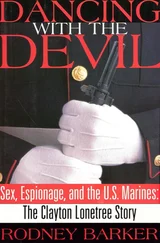Heywood Broun - The A. E. F. - With General Pershing and the American Forces
Здесь есть возможность читать онлайн «Heywood Broun - The A. E. F. - With General Pershing and the American Forces» — ознакомительный отрывок электронной книги совершенно бесплатно, а после прочтения отрывка купить полную версию. В некоторых случаях можно слушать аудио, скачать через торрент в формате fb2 и присутствует краткое содержание. ISBN: , Жанр: foreign_antique, foreign_prose, foreign_language, на английском языке. Описание произведения, (предисловие) а так же отзывы посетителей доступны на портале библиотеки ЛибКат.
- Название:The A. E. F.: With General Pershing and the American Forces
- Автор:
- Жанр:
- Год:неизвестен
- ISBN:http://www.gutenberg.org/ebooks/39072
- Рейтинг книги:4 / 5. Голосов: 1
-
Избранное:Добавить в избранное
- Отзывы:
-
Ваша оценка:
- 80
- 1
- 2
- 3
- 4
- 5
The A. E. F.: With General Pershing and the American Forces: краткое содержание, описание и аннотация
Предлагаем к чтению аннотацию, описание, краткое содержание или предисловие (зависит от того, что написал сам автор книги «The A. E. F.: With General Pershing and the American Forces»). Если вы не нашли необходимую информацию о книге — напишите в комментариях, мы постараемся отыскать её.
The A. E. F.: With General Pershing and the American Forces — читать онлайн ознакомительный отрывок
Ниже представлен текст книги, разбитый по страницам. Система сохранения места последней прочитанной страницы, позволяет с удобством читать онлайн бесплатно книгу «The A. E. F.: With General Pershing and the American Forces», без необходимости каждый раз заново искать на чём Вы остановились. Поставьте закладку, и сможете в любой момент перейти на страницу, на которой закончили чтение.
Интервал:
Закладка:
"Keep your head still," shouted a lieutenant. "That's a private fight. It's got nothing to do with you."
Soon the German turned and flew back in the direction of his own lines and when the necks of the doughboys were unfettered and they could look up again the sky was clear. Even the cream puff splotches were gone.
On another afternoon a Boche plane flew over the entire American area. It circled a field in divisional headquarters where a baseball game was in progress and flew home.
"I know why that German flew home after he reached – ," an officer explained. "Don't you see? He was trying to find out if we were Americans and that baseball game proved it to him."
The greatest aerial display occurred on a morning when a French officer was instructing an American company in the art of trench digging. He spoke no English, but an interpreter of a sort was making what shift he could. The doughboys tried to look interested and didn't succeed. It was harder when out from behind a cloud came one aeroplane, then another and another. When half a dozen had appeared from behind the cloud one doughboy could stand the strain no longer.
"Look," he shouted, "they're hatching them up there."
The French instructor finally granted a recess of ten minutes but before the time was up the planes had maneuvered out of sight. In spite of all the German activity in the air only one attempt was made to bomb the Americans during the summer. A single bomb was dropped on a village where the marines were stationed, but it did no damage.
The second week in the training area found the doughboys increasing their curriculum to include bombs and machine guns. It had not been possible to do much in the finer arts of war previously because of the absence of interpreters. A number of these had been mobilized now but they varied in quality. As one American officer put it, "Interpreters may be divided into three classes: those who know no English; those who know no French; and those who know neither."
However, the Americans managed to get their instruction in some way or other. No interpreters were needed with the machine guns. Instead each American company was divided up into little groups and a chasseur placed at the head of each group. I watched the instruction and found that little language was needed. The Frenchman would take a machine gun or automatic rifle apart and holding up each part give its French name. The Americans paid no particular attention to the outlandish terms which the French used for their machine gun parts, but they were alert to notice the manner in which the gun was put together and in the group in which I was standing two Americans were able to put the gun together without having any parts left over after a single demonstration.
Of course, a little language was used. Some of the marines had picked up a little very villainous French in Hayti and they made what shift they could with that. A few French Canadians and an occasional man from New Orleans could converse with the chasseurs and one or two phrases had been acquired by men hitherto entirely ignorant of French. "Qu'est-ce-que c'est?" was used by the purists as their form of interrogation, but there were others who tried to make "combien" do the work. "Combien," which we pronounced "come bean," was stretched for many purposes. I have heard it used and accepted as an equivalent for "whereabouts," "what did you say," "why," "which one" and "will you please show us once more how to put that machine gun together."
Not only did the Americans show an aptitude for getting the hang of the mechanism of the machine gun and the automatic rifle, but they shot well with them after a little bit of practice.
The first man I watched at work with the automatic rifle was green. He had taken the gun apart and put it together again with an occasional "regardez" and bit of demonstration from one of the Frenchmen, but the weapon was not yet his pal. He picked the gun up somewhat gingerly and aimed at the line of targets a couple of hundred yards away. Then he pulled the trigger and the bucking thing, which seemed to be intent on wriggling out of his arms, sprayed the top of the hill with bullets. The French instructor made a laughing comment and an American who spoke the language explained, "He says you ought to be in the anti-aircraft service."
The next man to try his luck was a non-commissioned officer long in the army. He patted the gun and wooed it a little in whispers before he shot. It was a French gun, to be sure, but the language of firearms is international. "Behave, Betsy," he said and she did. He sprayed shots along the line of targets at the bottom of the hill as the gun clattered away with all the clamor of a riveting machine at seven in the morning. When they looked at the targets they found he had scored thirty hits out of thirty-four and some were bull's-eyes. The French instructor was so pleased that he stepped forward as if to hug the ancient sergeant but the veteran's look of horror dissuaded him.
Bombing proved the most popular part of training and particularly as soon as it was possible to work with the live article. First of all dummy bombs were issued. A French officer carefully explained that the bomb should be thrown after four moves, counting one, two, three, four, as he posed something like a shot putter before he let the bomb go with an overhand, stiff, armed fling. He illustrated the method several times, but the first American to throw sent the bomb spinning out on a line just as if he were hurrying a throw to first from deep short. The Frenchman reproved him and explained carefully that, although it might be possible to throw a bomb a long way in the manner in which a baseball is thrown, it was necessary for a bomber to hurl many missiles and that he must preserve his arm. He also pointed out that the bomb would never land in the trenches of the enemy unless it was thrown with a considerable arc.
The men then kept to the exercises laid down by the instructor, but just before they stopped one or two could not resist the temptation of again "putting something on to it" and letting the bomb sail out fast. One lefthander who had pitched for a season in the Southern League was anxious to make some experiments to see if he couldn't throw a bomb with an out curve but he was informed that such an accomplishment would have no military utility.
The first American wounded in France was the victim of a bombing accident. A soldier threw a live bomb more than thirty meters from a trench. When the bomb burst a fragment came whirling back in some curious manner and fell into a box of grenades upon which a lieutenant was sitting. The fragment cut the pin of one of the bombs and the whole box went off with a bang. The lieutenant received only a slight cut on his forehead, but a French interpreter thirty yards away was knocked unconscious and lost the sight of his right eye. This Frenchman had spent two years under fire at Verdun without being scratched and here was his first wound come upon him on a quiet afternoon in a meadow miles from the lines.
Конец ознакомительного фрагмента.
Текст предоставлен ООО «ЛитРес».
Прочитайте эту книгу целиком, купив полную легальную версию на ЛитРес.
Безопасно оплатить книгу можно банковской картой Visa, MasterCard, Maestro, со счета мобильного телефона, с платежного терминала, в салоне МТС или Связной, через PayPal, WebMoney, Яндекс.Деньги, QIWI Кошелек, бонусными картами или другим удобным Вам способом.
Интервал:
Закладка:
Похожие книги на «The A. E. F.: With General Pershing and the American Forces»
Представляем Вашему вниманию похожие книги на «The A. E. F.: With General Pershing and the American Forces» списком для выбора. Мы отобрали схожую по названию и смыслу литературу в надежде предоставить читателям больше вариантов отыскать новые, интересные, ещё непрочитанные произведения.
Обсуждение, отзывы о книге «The A. E. F.: With General Pershing and the American Forces» и просто собственные мнения читателей. Оставьте ваши комментарии, напишите, что Вы думаете о произведении, его смысле или главных героях. Укажите что конкретно понравилось, а что нет, и почему Вы так считаете.












